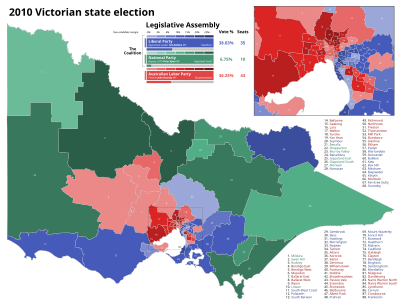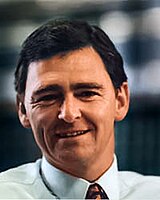This article has problems which may render some text or images unreadable or difficult to read in dark mode. Desktop readers can switch to light mode temporarily using the eyeglasses icon at the top of the page. |
| |||||||||||||||||||||||||||||||||||||||||||
All 88 seats in the Victorian Legislative Assembly All 40 seats in the Victorian Legislative Council 45 seats needed for a majority | |||||||||||||||||||||||||||||||||||||||||||
|---|---|---|---|---|---|---|---|---|---|---|---|---|---|---|---|---|---|---|---|---|---|---|---|---|---|---|---|---|---|---|---|---|---|---|---|---|---|---|---|---|---|---|---|
| |||||||||||||||||||||||||||||||||||||||||||
 Results in each electorate. | |||||||||||||||||||||||||||||||||||||||||||
| |||||||||||||||||||||||||||||||||||||||||||
The 2010 Victorian state election, held on Saturday, 27 November 2010, was for the 57th Parliament of Victoria. The election was to elect all 88 members of the Legislative Assembly and all 40 members of the Legislative Council. The incumbent centre-left Labor Party government, led by John Brumby, was defeated by the centre-right Liberal/National Coalition opposition, led by Ted Baillieu. The election gave the Coalition a one-seat majority in both houses of parliament.
Voting is compulsory in Victoria. Elections for the Legislative Assembly use instant-runoff voting (called preferential voting in Australia) in single-member electorates (called districts). Elections for the Legislative Council use partial proportional representation, using single transferable vote (also called preferential voting) in multi-member electorates (called regions). Members of the Legislative Council are elected from eight electoral regions each returning five members, making the quota for election in each region 16.67 percent of valid votes cast in that region. The election was conducted by the Victorian Electoral Commission (VEC).

